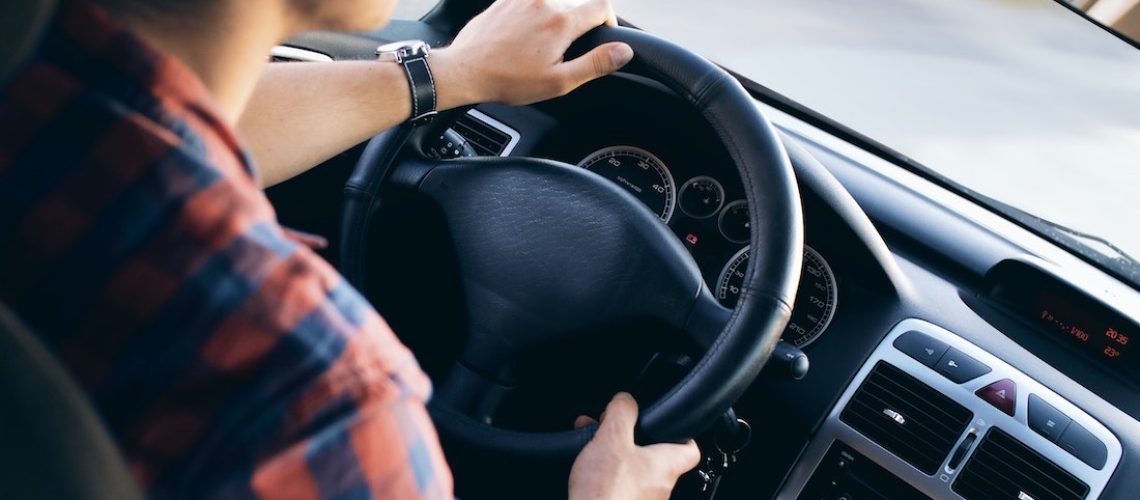Introduction
 Drivers are now offered many advanced features in modern vehicles, all made possible by using Advanced Driver Assistance Systems (ADAS). As more and more automakers offer ADAS-equipped cars, the importance of ensuring that these systems are functioning properly becomes paramount. This is where ADAS calibration comes in.
Drivers are now offered many advanced features in modern vehicles, all made possible by using Advanced Driver Assistance Systems (ADAS). As more and more automakers offer ADAS-equipped cars, the importance of ensuring that these systems are functioning properly becomes paramount. This is where ADAS calibration comes in.
ADAS calibration is essential for ensuring the optimal performance of ADAS systems and the safety of drivers and other road users. It involves ensuring that the sensors, cameras, and radar systems that the ADAS uses for data collection are properly aligned. This procedure requires specialized equipment and must be conducted by trained technicians.
This article provides an in-depth look at ADAS calibration, providing an understanding of its basics and significance. It will also discuss the different types of calibration, the required equipment, and their importance in driver safety. By demystifying ADAS calibration and understanding its basics, you can ensure that your vehicle’s ADAS system is functioning optimally and that you are driving safely.
What are Advanced Driver Assistance Systems (ADAS)?

Advanced Driver Assistance Systems (ADAS) is a suite of integrated technologies that enable vehicles to detect and respond to their surroundings. ADAS systems help to enhance the safety, convenience, and performance of modern cars. This technology alerts drivers to potential hazards in the road environment and assists with steering, accelerating, and braking. Even though these systems are not autonomous, they offer drivers high safety and convenience. Some common ADAS technologies include:
Adaptive Cruise Control
Adaptive cruise control helps maintain a safe distance between vehicles by automatically controlling the car’s speed. This technology can adjust the speed according to the relative speed of the car in front.
Lane Departure Warning
Lane departure warning helps to alert drivers when they are drifting from their lane. The system uses cameras, radar, and/or ultrasonic sensors to detect when a driver is straying from their lane and can alert them with audible and visual warnings.
Automatic Emergency Braking
Automatic emergency braking helps to reduce the risk of a collision by automatically applying the brakes if it detects an imminent collision. This technology uses cameras, radar, and other sensors to detect possible collisions and can alert drivers with an audible and visual warning.
Blind Spot Detection
Blind spot detection is designed to alert drivers when a vehicle is in their blind spot. This system uses cameras and radar to detect when a car is in the driver’s blind spot and can alert them with an audible and visual warning.
The Need for ADAS Calibration

ADAS calibration is an essential step for ensuring that the sensors and cameras used by ADAS systems are properly aligned with each other. Without proper calibration, the ADAS system may not be able to accurately detect and respond to its surrounding environment. A misaligned or improperly calibrated ADAS system can lead to serious performance and safety issues.
For example, if the cameras are not properly calibrated, the system may have difficulty recognizing objects in its environment. This can lead to the system being unable to detect obstacles in the vehicle’s path, leading to potential collisions. Similarly, if the radar system is not calibrated correctly, it may detect objects that are not present, leading to false alarms and potential distractions for the driver.
Failure to calibrate ADAS can lead to accuracy issues, with the system failing to detect tiny to medium objects in its path. A sensor that cannot accurately assess the environment surrounding a vehicle is useless, and hence proper calibration of ADAS sensors is essential for safe driving.
Components Requiring Calibration
ADAS systems’ safe and reliable operation depends heavily on properly calibrated sensors and cameras. They are responsible for detecting and processing data from the environment around the vehicle, which is then used by other ADAS components to make decisions. This includes elements such as cameras, radar systems, and LiDAR.
Cameras are the primary sensors in ADAS-equipped vehicles and are responsible for detecting obstacles in the vehicle’s path. Cameras must be appropriately calibrated to ensure the system can accurately detect objects in its environment.
ADAS also use radar systems to detect objects in the vehicle’s path. Radar systems use radio waves to detect objects in the environment and must be properly calibrated to ensure accurate data.
LiDAR (Light Detection and Ranging) is another important component of ADAS systems. This technology uses lasers to detect and map objects in the environment and must also be properly calibrated to ensure accurate data collection.
Types of ADAS Calibration
ADAS calibration can be divided into three main categories: static, dynamic, and target-based. Static calibration is the most basic type of calibration used to ensure that the sensors and cameras are correctly aligned. This process involves adjusting the sensors and cameras to properly calibrate. For example, the camera may need to be adjusted to be pointed in the correct direction and angle.
Dynamic calibration ensures that the sensors and cameras remain correctly aligned as the vehicle moves. This process involves continuously adjusting the sensors and cameras as the car moves, ensuring they stay in optimal alignment. Some modern vehicles have automatic dynamic calibration systems, which can detect and adjust the sensors and cameras as necessary.
Target-based calibration ensures that the sensors and cameras can accurately detect objects in their environment. This process involves using a target object (such as a reflective panel) to verify that the sensors and cameras accurately detect objects in their environment. This method ensures that the ADAS system can detect small or distant objects. For example, this type of calibration may be used to ensure that the system can detect a pedestrian in a crosswalk at a certain distance.
The Calibration Process
The ADAS calibration process is relatively straightforward and can be performed by trained technicians with the right equipment. The process involves ensuring that all the sensors and cameras are correctly aligned. This includes adjusting the camera’s angle, height, and orientation and making sure it is pointing in the correct direction.
Once the sensors and cameras are correctly aligned, the technician will use specialized equipment to perform dynamic calibration. This process involves continuously adjusting the sensors and cameras as the vehicle moves, ensuring they remain in optimal alignment. The technician will also use a target object to complete target-based calibration using a reflective panel (or other targets) to ensure that the sensors and cameras can accurately detect objects in their environment.
Finally, the technician will use calibration software to confirm that the sensors and cameras are properly calibrated. This process involves testing the sensors and cameras to ensure they accurately detect objects in their environment. Once the calibration process is complete, the technician will confirm that the ADAS system is functioning properly.
Importance of Professional Calibration
Although ADAS calibration can be done without professional assistance, it is recommended that drivers seek the services of a trained technician for this procedure. Professional technicians possess the expertise and specialized equipment required to calibrate the sensors and cameras.
Professional technicians also have access to the latest diagnostic tools and software, which can help to detect and diagnose any issues with the ADAS system more accurately. The technicians will also have access to a wide selection of specialized targets for target-based calibration, ensuring that the sensors and cameras can accurately detect small or distant objects.
Challenges and Considerations in ADAS Calibration
Many modern vehicles come equipped with advanced driver assistance systems with an ever-increasing number of sensors and cameras. This makes the calibration process increasingly complex, as technicians must ensure that all the sensors and cameras are correctly aligned. Additionally, environmental factors such as weather, temperature, and humidity can affect the accuracy of the sensors and cameras, resulting in misaligned or inaccurate readings.
Regular recalibration is also essential for ensuring that ADAS systems remain properly aligned. Any aftermarket modification or installation of additional parts can affect the alignment of the sensors and cameras, resulting in inaccurate readings. These modifications must be considered during the calibration process, as failure to do so can lead to safety issues.
Finally, as ADAS technology continues to evolve, the challenges and considerations for calibration are also changing. Recent studies and reports have shown that ADAS is rapidly becoming more advanced, constantly introducing new capabilities. This means technicians must stay current with the latest developments and trends in ADAS technology to properly calibrate these systems.
ADAS Calibration Regulations and Standards
If a vehicle is equipped with an ADAS system, it must be properly calibrated for optimal performance and driver safety. To this end, some several regulatory standards and guidelines must be followed during the calibration process.
In the United States, the National Highway Traffic Safety Association (NHTSA) has issued several guidelines and standards for ADAS calibration. These regulations cover the calibration of various sensors, cameras, radar systems, LiDAR systems, and target-based calibration for pedestrian detection. It is also important to note that these regulations may differ from state to state, so it is best to check with your local laws before performing any ADAS calibration.
In addition to government regulations, the Society of Automotive Engineers (SAE) has also published several industry standards and guidelines for ADAS calibration. These guidelines provide detailed instructions on the proper calibration of various ADAS components and suggested best practices.
Finally, the European Union (EU) has also issued regulations and standards for ADAS calibration. The regulations issued by the EU provide detailed instructions on proper calibration procedures and best practices for ADAS systems.
DIY Calibration vs. Professional Calibration
If you own a vehicle equipped with ADAS, you may consider performing the calibration yourself instead of doing it professionally. While this is possible, a few things should be considered before attempting DIY calibration.
DIY calibration can save time and money but also comes with potential risks. Without the right tools, knowledge, and experience, properly calibrating ADAS systems can be difficult. Additionally, some components of the calibration process require specialized tools that may not be available to the average consumer.
Improperly calibrated ADAS systems can lead to serious safety issues, as the system may not be able to detect and respond to its surrounding environment accurately. This can lead to false alarms, missed obstacles, and other potential hazards. Studies have shown that professional calibration is more effective than DIY methods, with properly calibrated systems being far more reliable and accurate.
Conclusion
ADAS technology is quickly becoming an integral part of modern vehicles, offering drivers a range of advanced safety features. However, the systems’ safe and reliable operation depends heavily on proper calibration. Without properly calibrated sensors and cameras, an ADAS system may not be able to accurately detect objects in its environment, leading to serious safety risks. This is why drivers need to prioritize professional ADAS calibration and stay informed about the latest advancements in automotive technology. By doing so, drivers can ensure that their vehicles are equipped with the latest technology and remain safe on the road.

